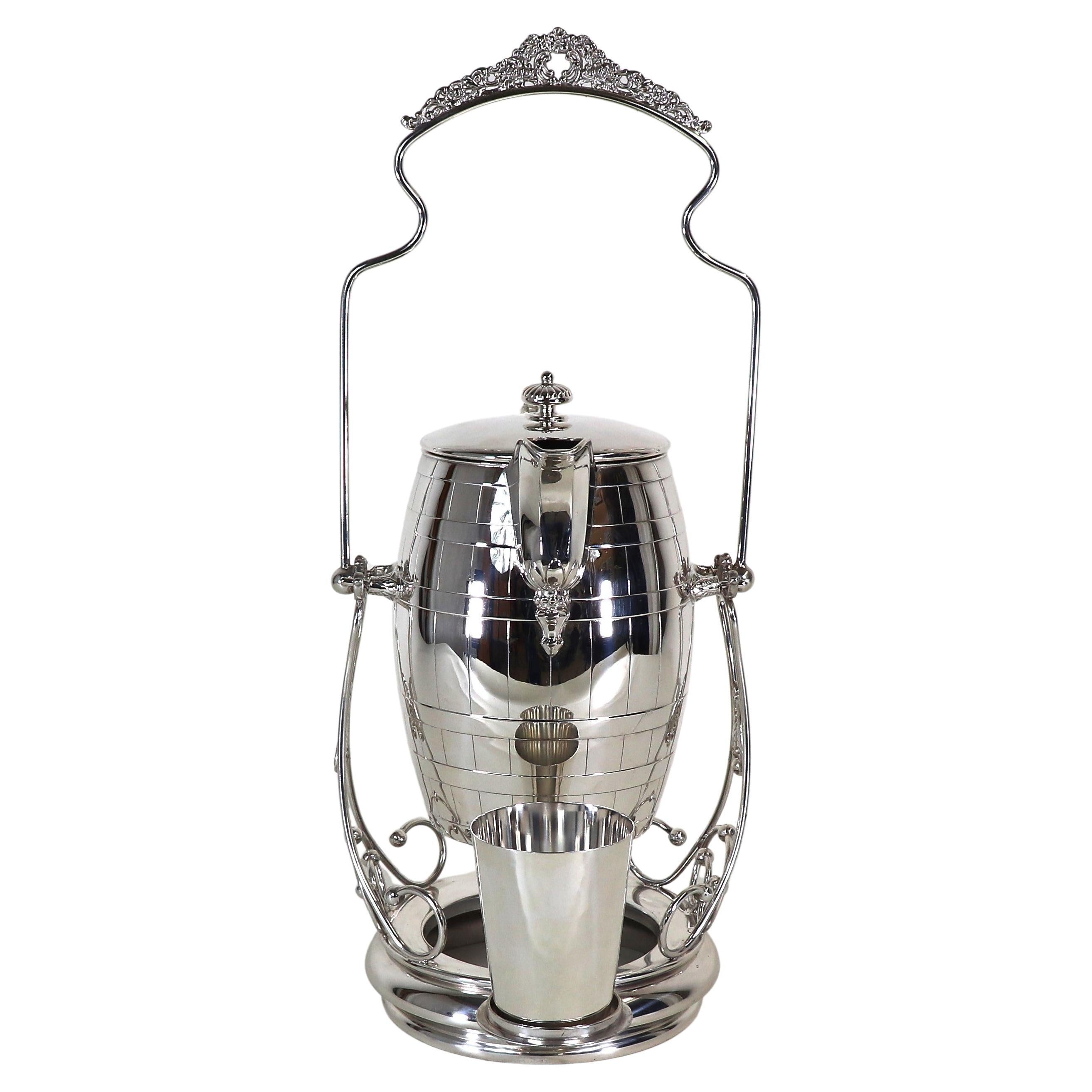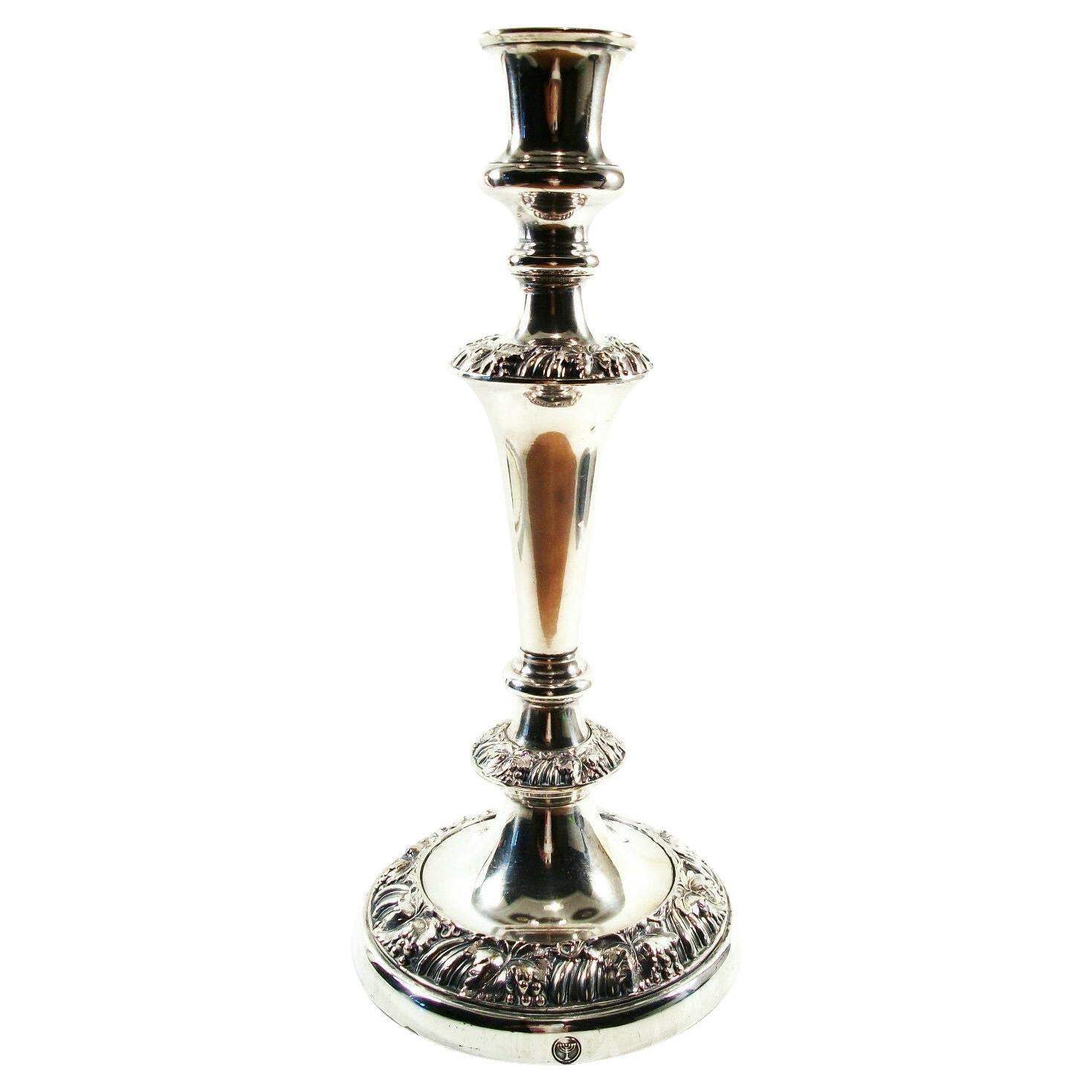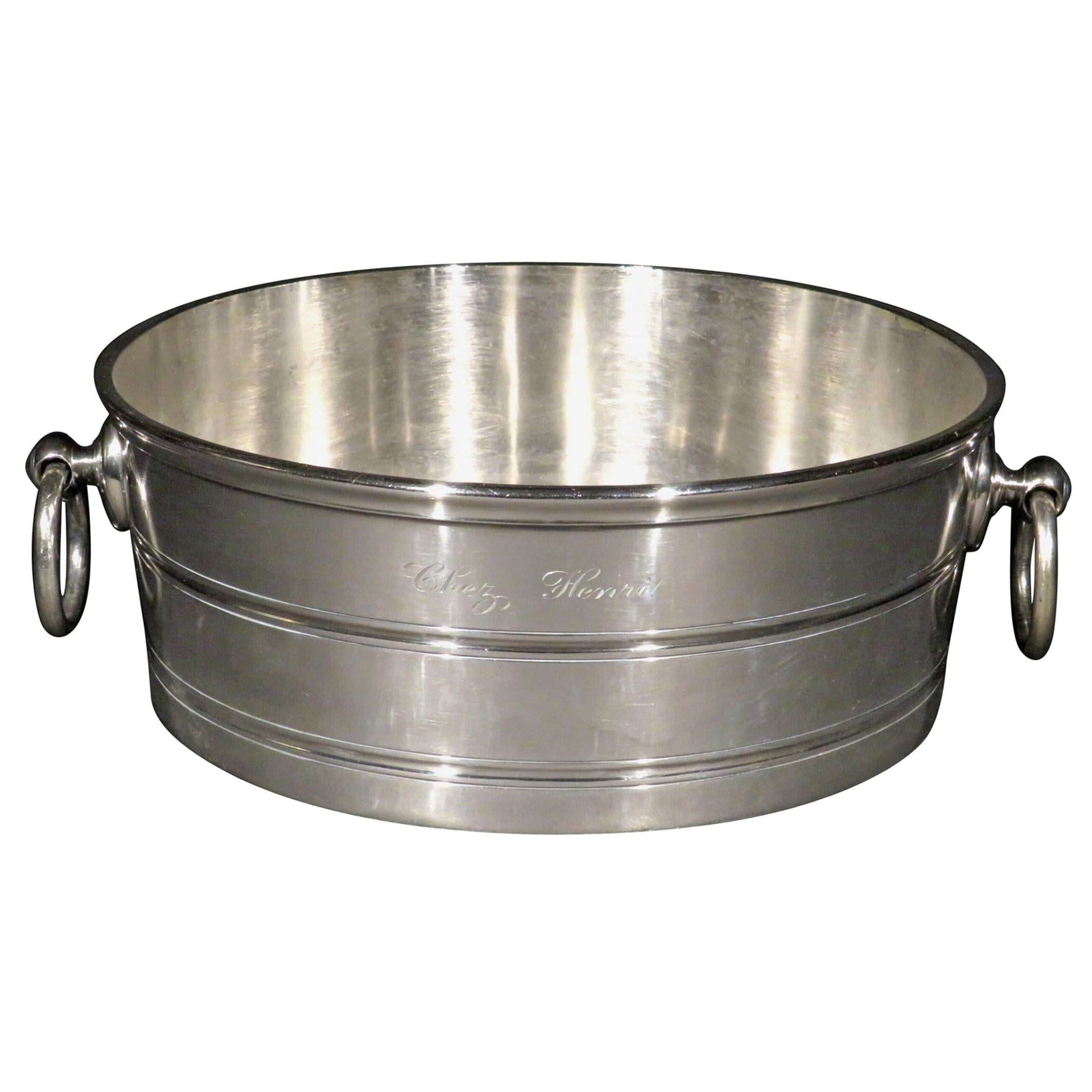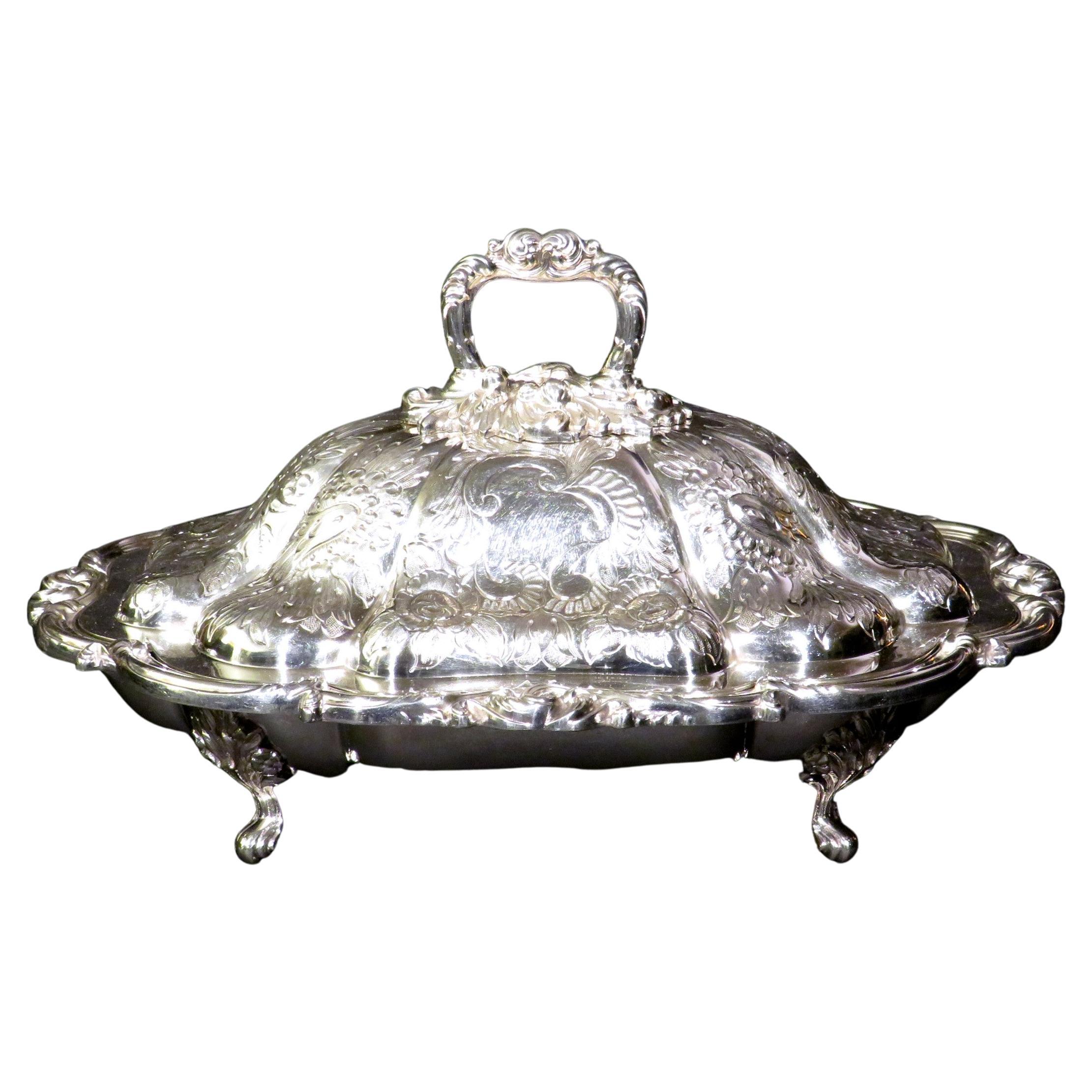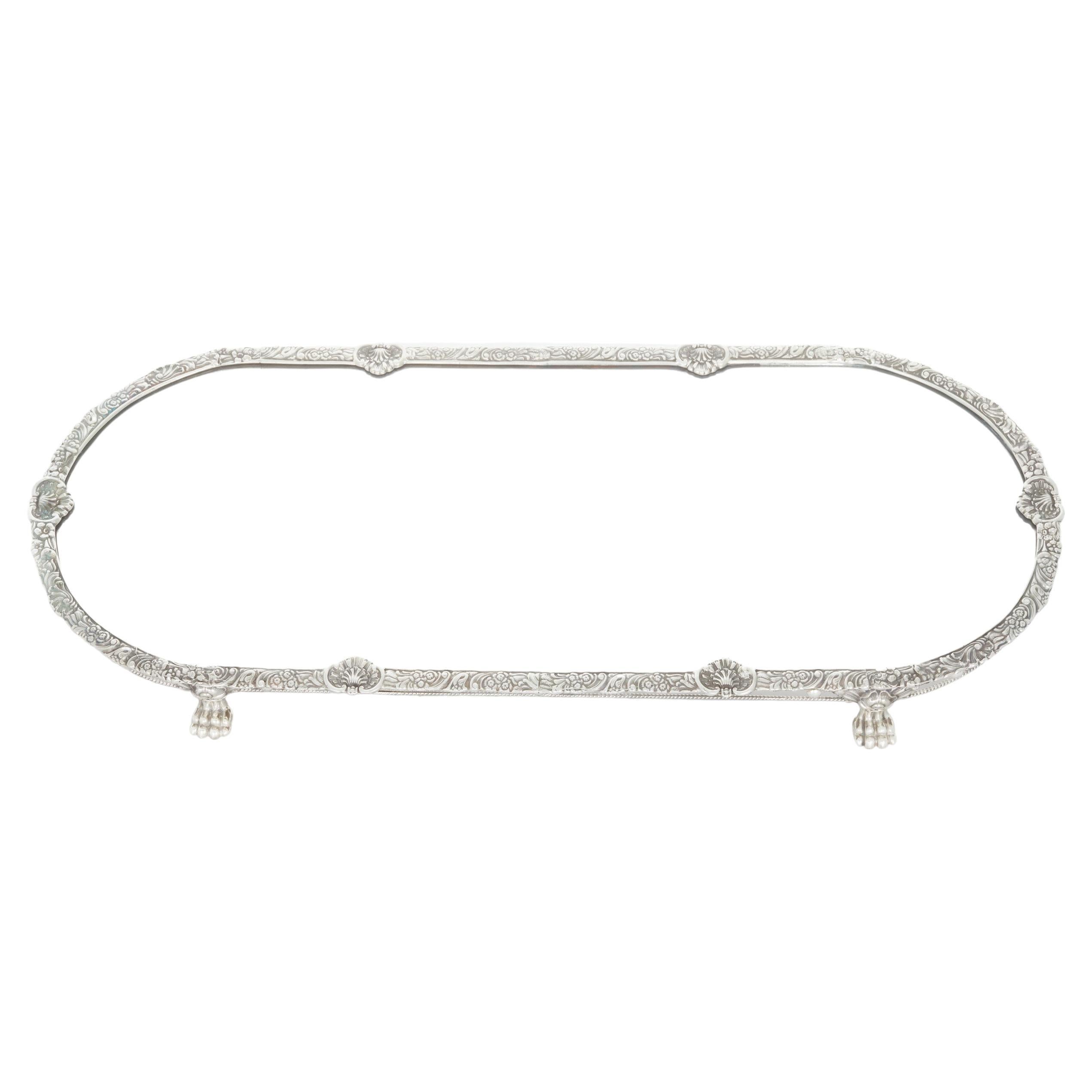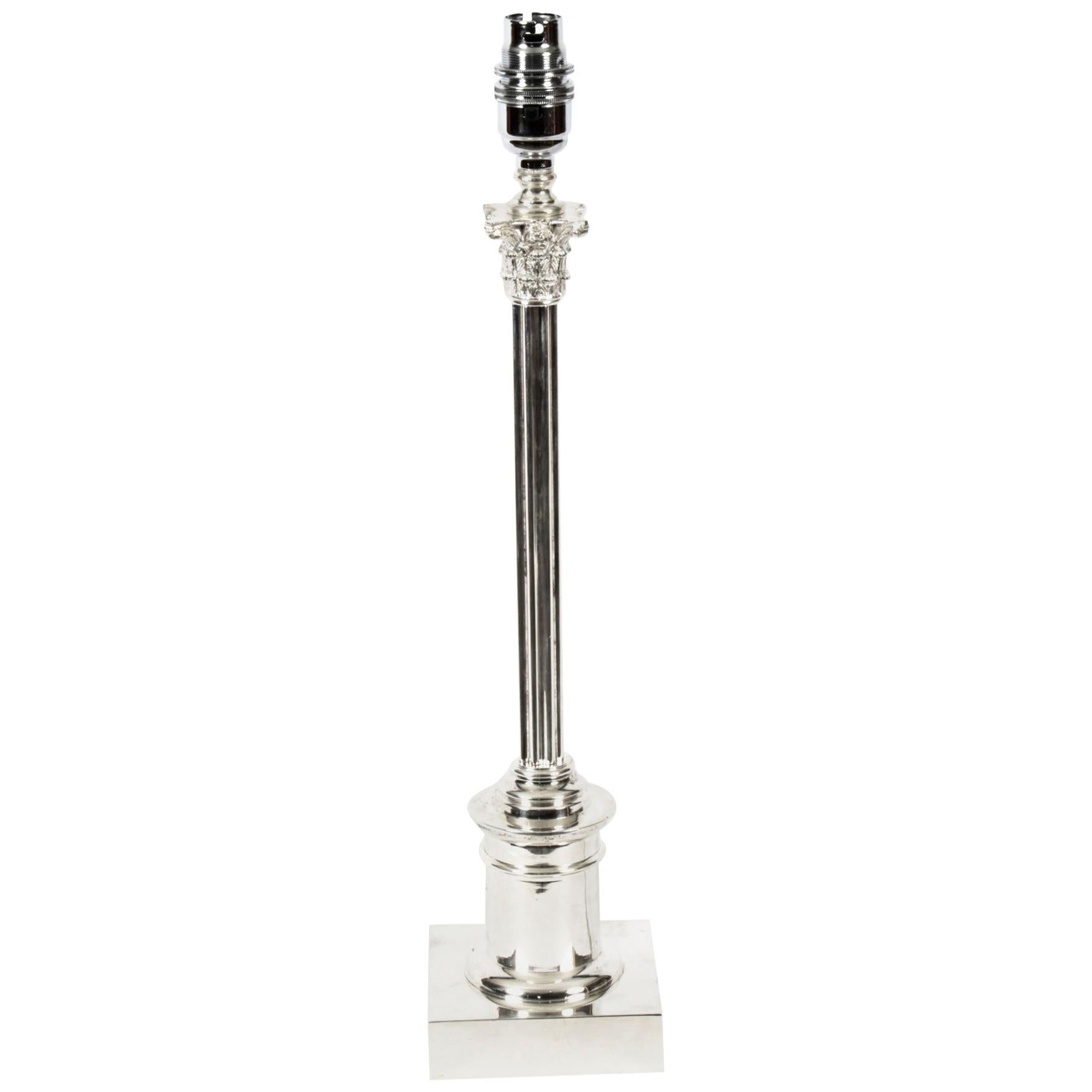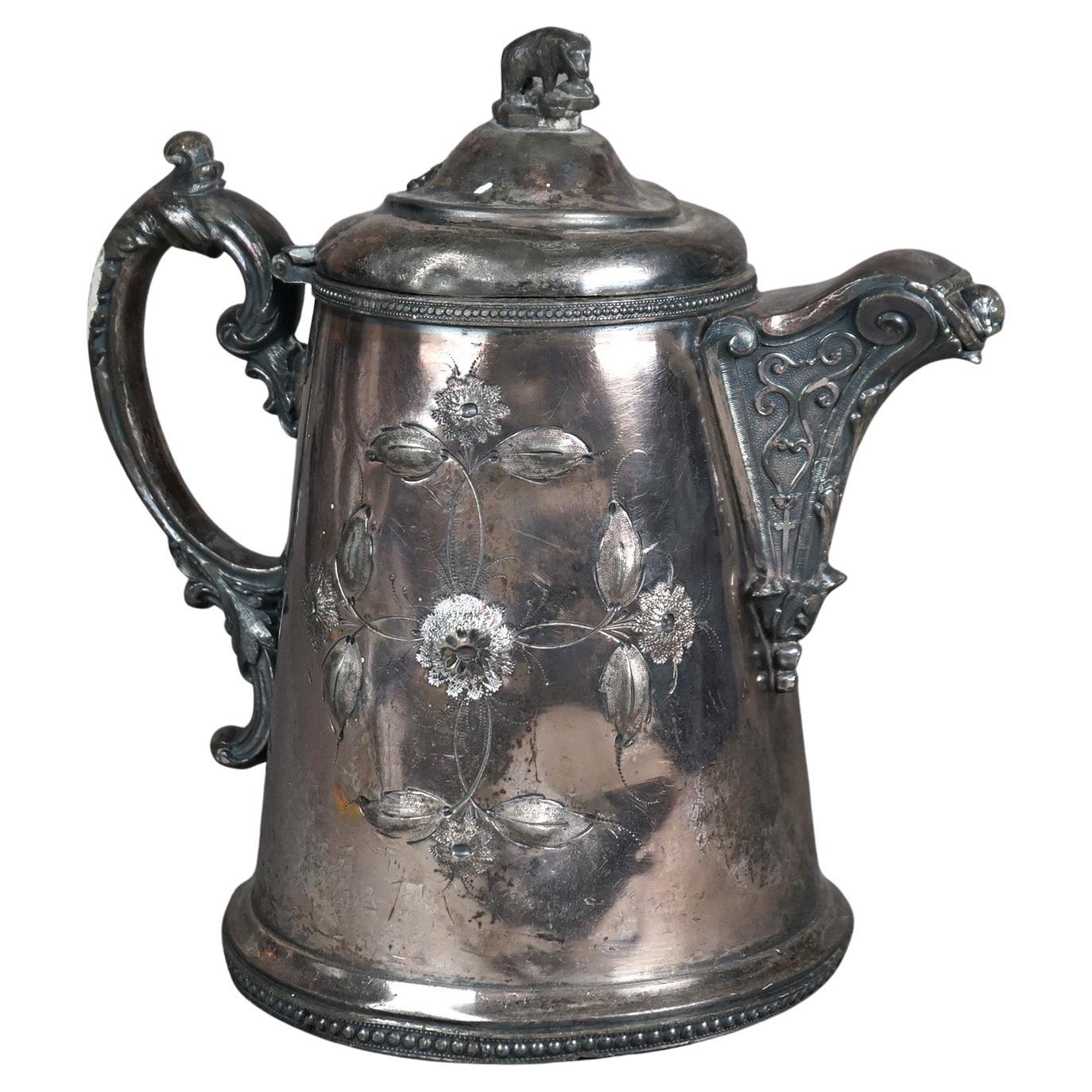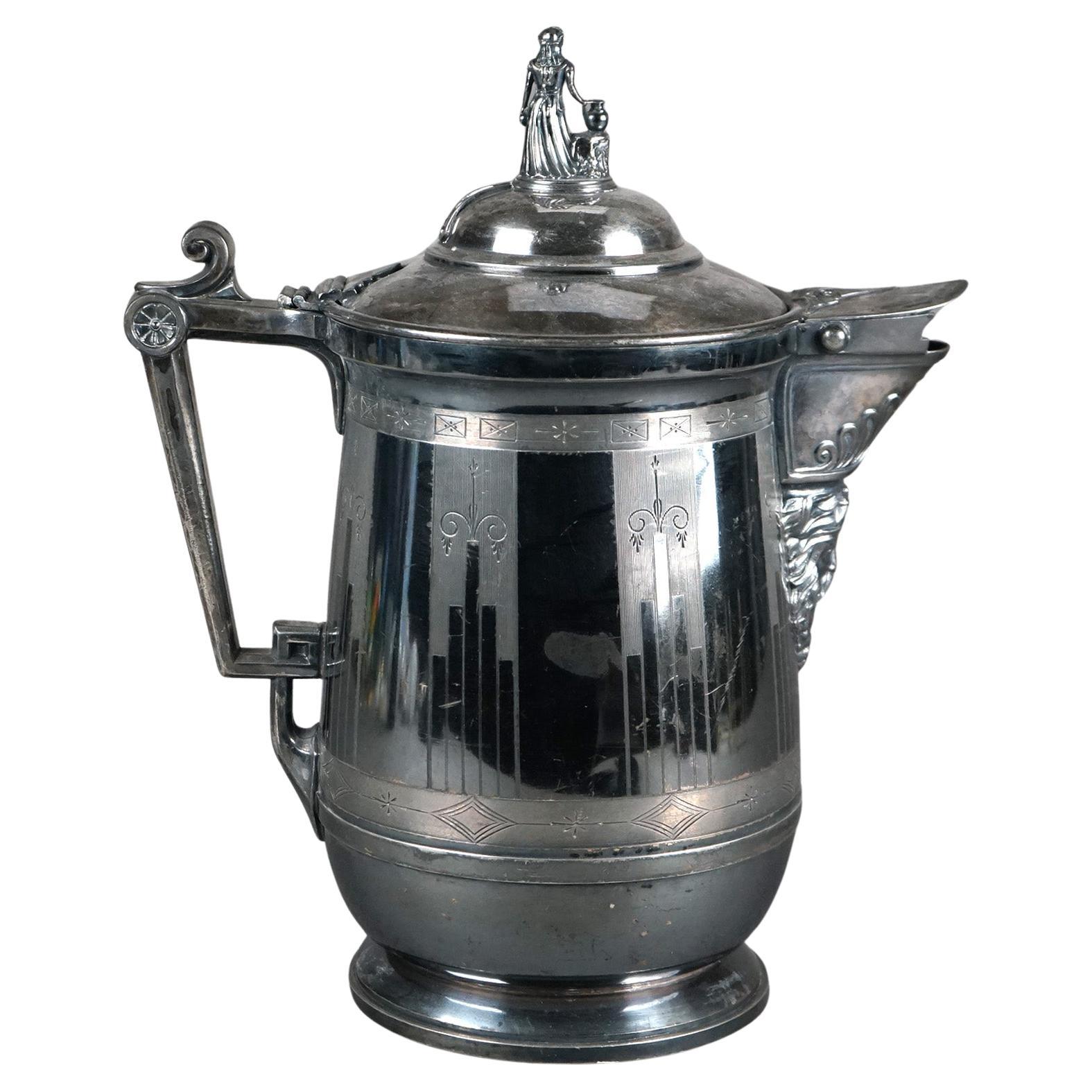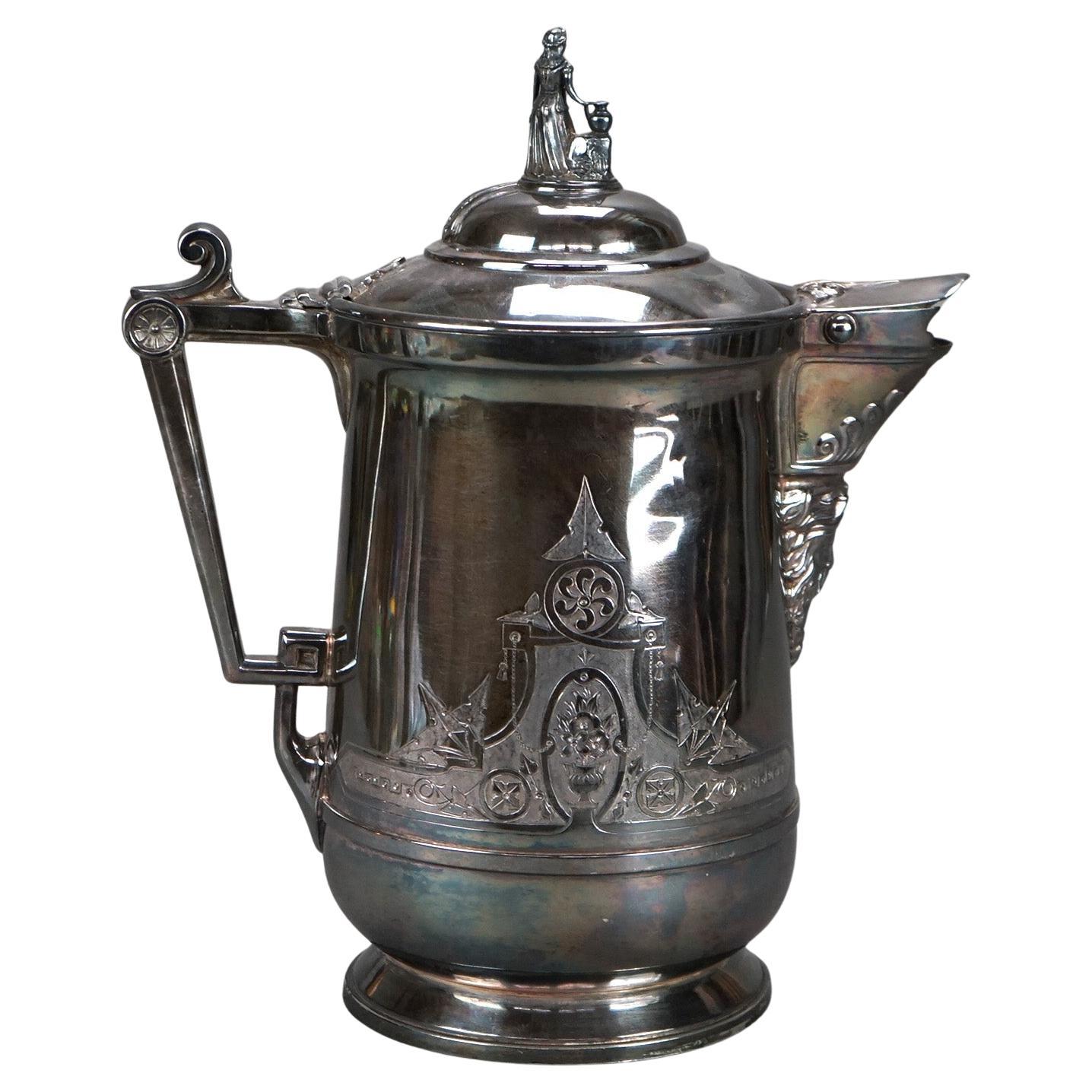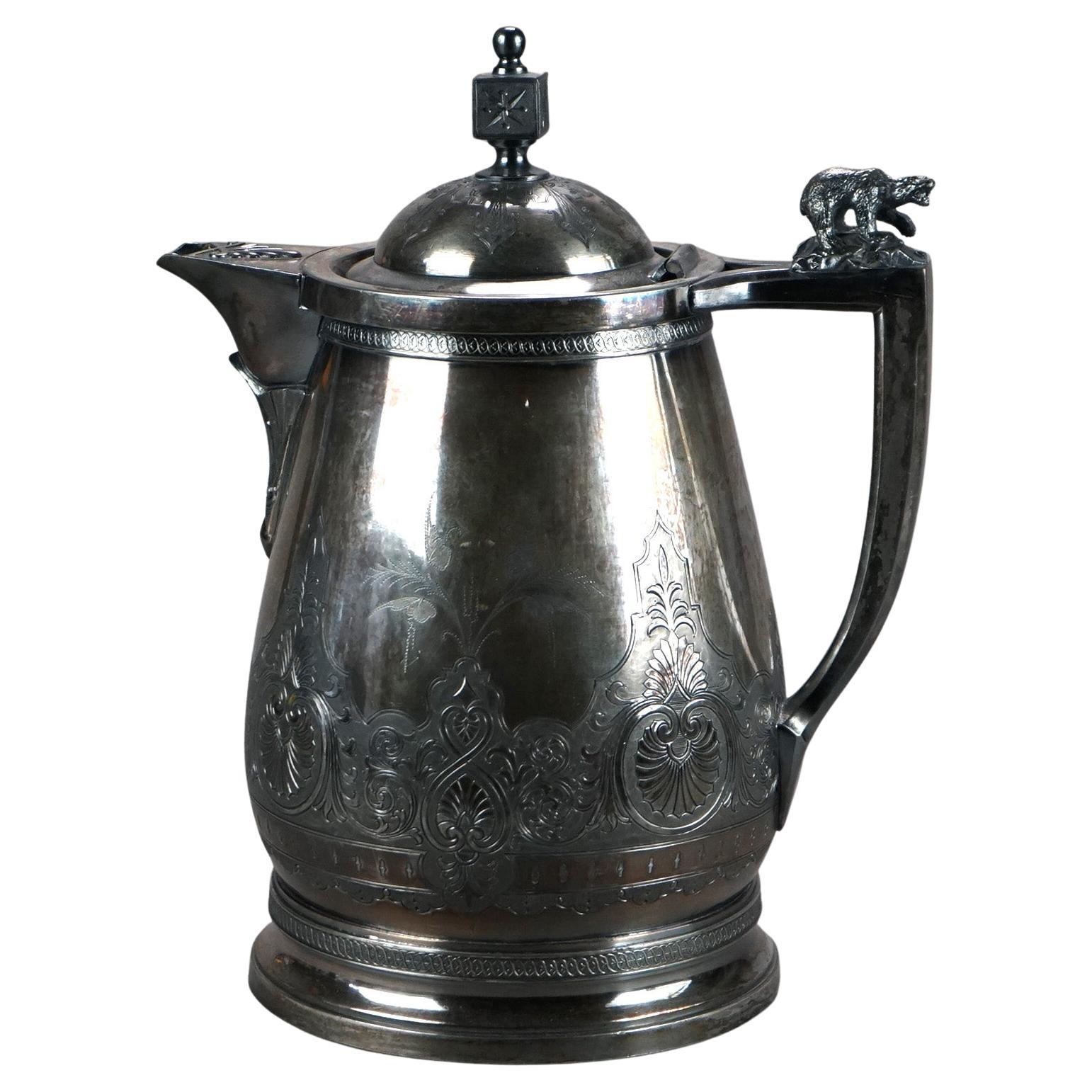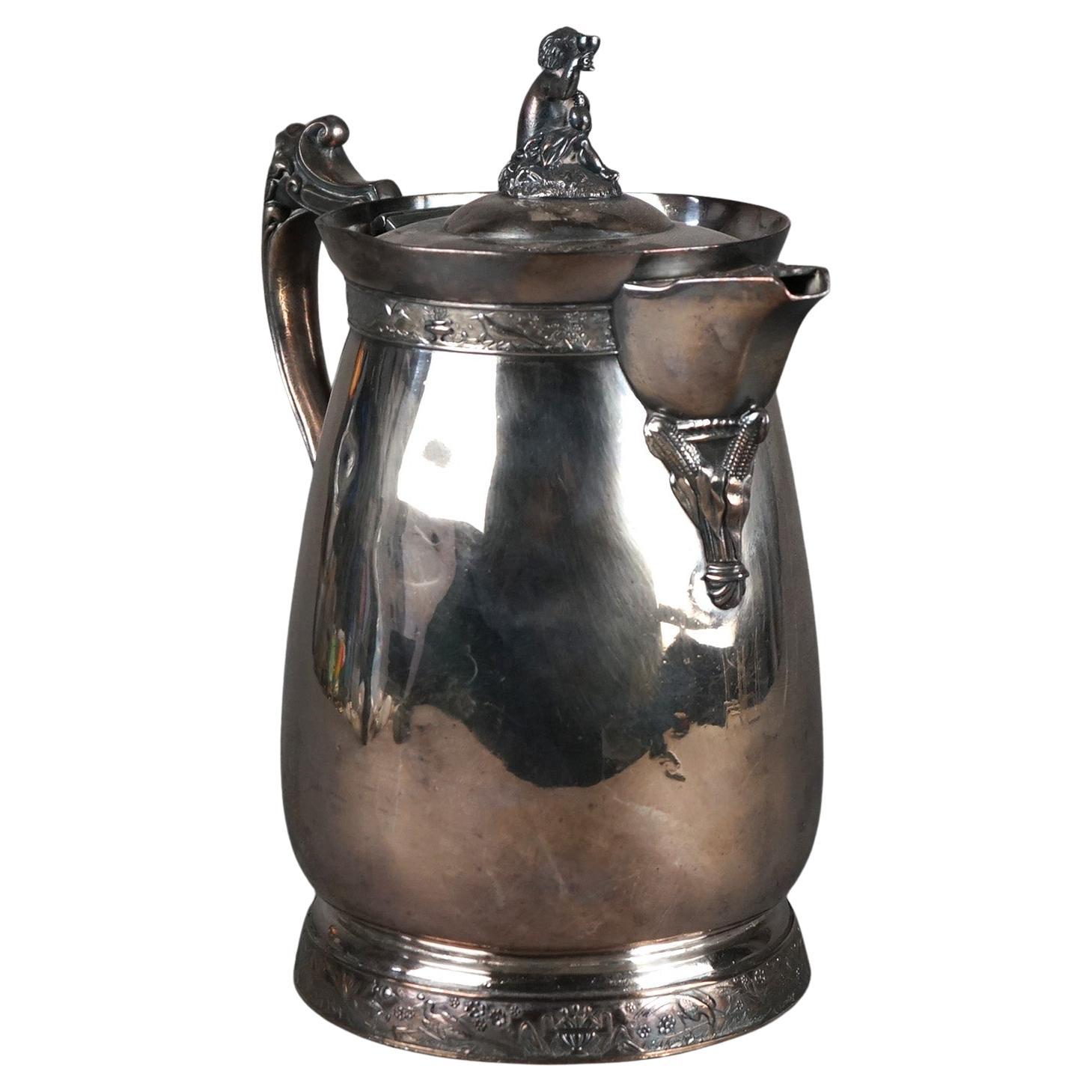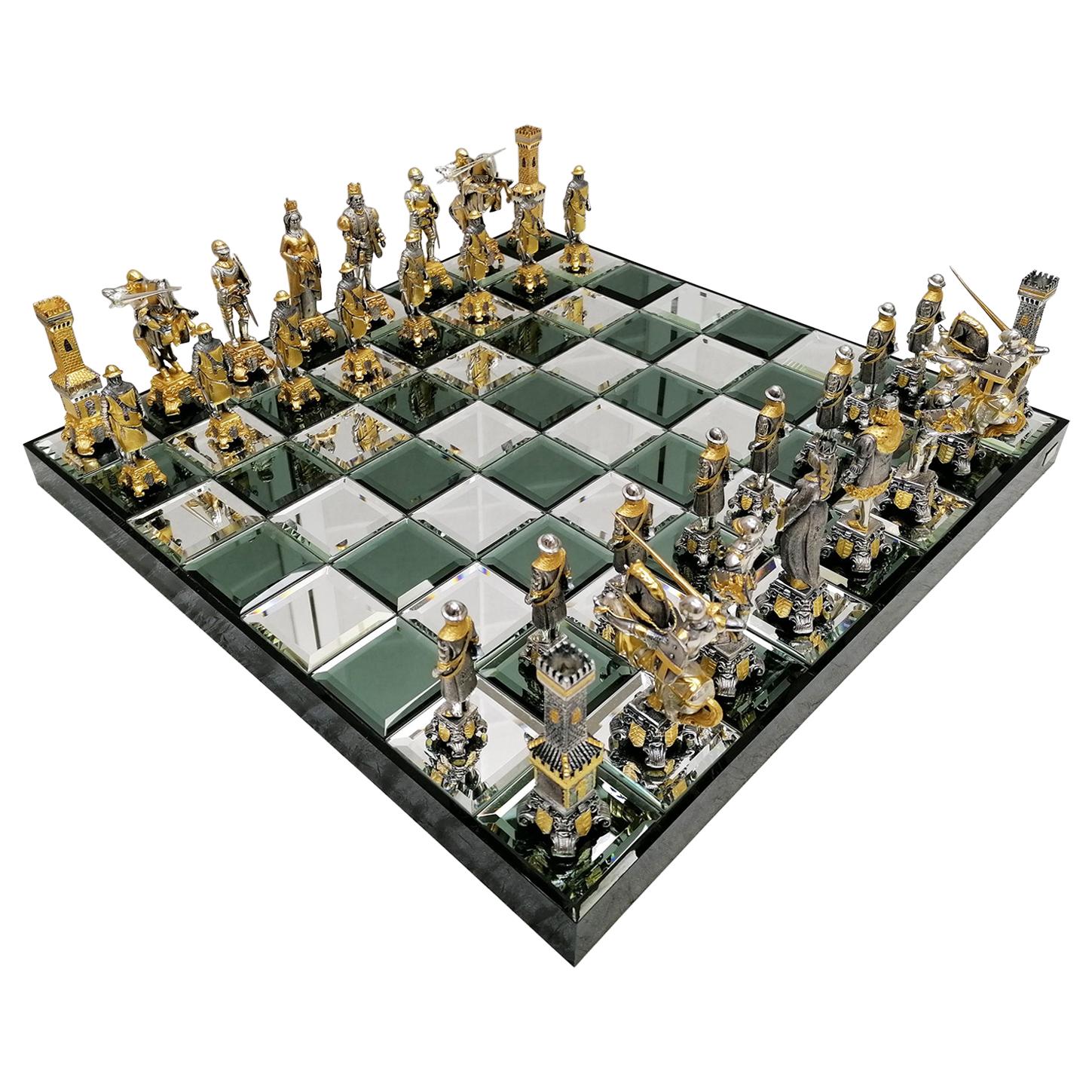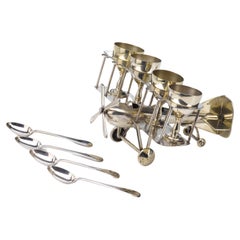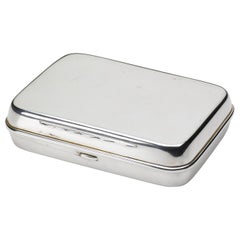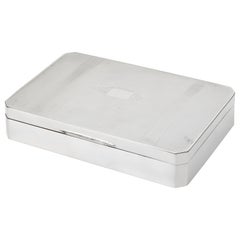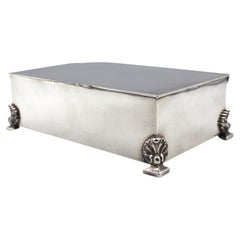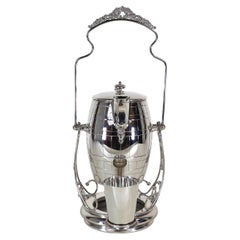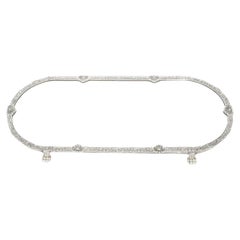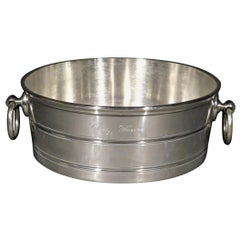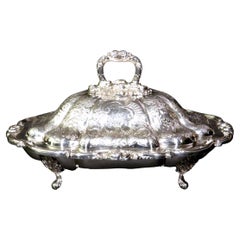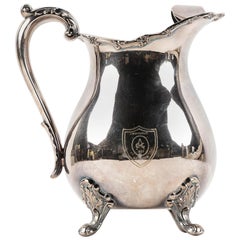
Aronimink Golf Club Antique Silver Plate Water Pitcher, circa Early 20th Century
View Similar Items
Want more images or videos?
Request additional images or videos from the seller
1 of 5
Aronimink Golf Club Antique Silver Plate Water Pitcher, circa Early 20th Century
About the Item
- Dimensions:Height: 8.5 in (21.59 cm)Width: 8 in (20.32 cm)Depth: 5.5 in (13.97 cm)
- Materials and Techniques:
- Place of Origin:
- Period:
- Date of Manufacture:1920
- Condition:Wear consistent with age and use. Overall very good condition. The pitcher has some surface-wear from age and use, but is otherwise in very good condition. It’s hallmark on the bottom is clearly visible as well as the etched crest on the front.
- Seller Location:Colorado Springs, CO
- Reference Number:Seller: S1201stDibs: LU909712325671
About the Seller
4.9
Platinum Seller
Premium sellers with a 4.7+ rating and 24-hour response times
Established in 2010
1stDibs seller since 2011
452 sales on 1stDibs
Typical response time: 1 hour
Authenticity Guarantee
In the unlikely event there’s an issue with an item’s authenticity, contact us within 1 year for a full refund. DetailsMoney-Back Guarantee
If your item is not as described, is damaged in transit, or does not arrive, contact us within 7 days for a full refund. Details24-Hour Cancellation
You have a 24-hour grace period in which to reconsider your purchase, with no questions asked.Vetted Professional Sellers
Our world-class sellers must adhere to strict standards for service and quality, maintaining the integrity of our listings.Price-Match Guarantee
If you find that a seller listed the same item for a lower price elsewhere, we’ll match it.Trusted Global Delivery
Our best-in-class carrier network provides specialized shipping options worldwide, including custom delivery.More From This Seller
View AllSilver Plated Airplane-Themed Tableware, circa 1910
Located in Colorado Springs, CO
This is a beautiful silver-plated egg cup and spoon set with an airplane motif, dating to the early 1910s. The set includes four matching footed egg cups. The cups sit upon the stack...
Category
Vintage 1910s English Art Deco Sheffield and Silverplate
Materials
Silver
Hallmarked Silver Plated Keepsake Box, Sheffield, Uk, Circa 1900
Located in Colorado Springs, CO
Offered is a stunning Sheffield silver keepsake box dating to 1900, with associated hallmark. This small box includes a clean interior and rounded corners. The box is free of names or initials, but would have been used to house keepsakes such as jewelry or cufflinks. A well maintained, elegant piece, this antique silver box is an excellent addition to any silver collection.
Trinket or keepsake boxes have taken on many forms since their first conception in ancient times. However their purpose remains the same; to store jewelry and other items precious to the owner. Originally, these boxes were used specifically for jewelry. These were in common use as early as 5000 BC in Ancient Egypt, when the majority of Egyptians, both male and female, wore jewelry. Boxes were used to keep these gemstone encrusted items safe. In Ancient Rome, jewelry was a status symbol. Rings and brooches were utilized to represent ones status in society. Again, boxes were needed for security and storage purposes. Finding early examples of these are quite rare.
Victorian and Edwardian examples of trinket boxes are far more common. This is because owning jewellery was a luxury until the Victorian era- let alone possessing so much a box was needed to store it all. Fine jewelry and other items became available to the masses after the industrial revolution due to the reduction in production costs. This led to a demand for trinket boxes, which were much smaller than jewelry boxes and therefore better suited to the needs of the middle class who did not yet possess an abundance of jewelry.
In Victorian households, collectables and other items of interested were also stashed inside these boxes. This is why they are known as trinket or keepsake boxes, rather than just jewelry boxes, although of course jewelry was also stored in them. Trinket boxes were produced in large numbers around this time. Many were lined with colored plush or velvet or rich wood. More elaborate designs had interior divisions and trays for rings and other pieces of jewellery. It was also common to see trinket boxes so small that they could only contain one item, such as a single ring. Ornate exteriors were created to reflect the value of the trinket boxes contents.
The Edwardian era saw the introduction of new styles of trinket box. These included small circular or oblong boxes...
Category
Antique Early 1900s British Art Deco Decorative Boxes
Materials
Silver
Hallmarked Silver Plated Keepsake Box, Sheffield, UK, circa 1900
Located in Colorado Springs, CO
Offered is a stunning silver plated keepsake box dating to 1900, with associated hallmark. This small box includes a wooden interior with two slots and a blank square on top where initials could have been engraved. A well maintained, elegant piece, this antique silver box is an excellent addition to any silver or home decor collection.
Trinket or keepsake boxes have taken on many forms since their first conception in ancient times. However their purpose remains the same; to store jewelry and other items precious to the owner. Originally, these boxes were used specifically for jewelry. These were in common use as early as 5000 BC in Ancient Egypt, when the majority of Egyptians, both male and female, wore jewelry. Boxes were used to keep these gemstone encrusted items safe. In Ancient Rome, jewelry was a status symbol. Rings and brooches were utilized to represent ones status in society. Again, boxes were needed for security and storage purposes. Finding early examples of these are quite rare.
Victorian and Edwardian examples of trinket boxes are far more common. This is because owning jewellery was a luxury until the Victorian era- let alone possessing so much a box was needed to store it all. Fine jewelry and other items became available to the masses after the industrial revolution due to the reduction in production costs. This led to a demand for trinket boxes, which were much smaller than jewelry boxes and therefore better suited to the needs of the middle class who did not yet possess an abundance of jewelry.
In Victorian households, collectables and other items of interested were also stashed inside these boxes. This is why they are known as trinket or keepsake boxes, rather than just jewelry boxes, although of course jewelry was also stored in them. Trinket boxes were produced in large numbers around this time. Many were lined with colored plush or velvet or rich wood. More elaborate designs had interior divisions and trays for rings and other pieces of jewellery. It was also common to see trinket boxes so small that they could only contain one item, such as a single ring. Ornate exteriors were created to reflect the value of the trinket boxes contents.
The Edwardian era saw the introduction of new styles of trinket box. These included small circular or oblong boxes...
Category
Antique Early 1900s English Art Deco Decorative Boxes
Materials
Silver
$600 Sale Price
20% Off
Silver Plated Keepsake Box, Early 20th Century
Located in Colorado Springs, CO
Offered is a silver plated keepsake box, dating to the early 1900s. The hallmarked box offers great storage solution for jewelry, cufflinks, and other keepsakes, with a divided inter...
Category
Antique Early 1900s English Jewelry Boxes
Materials
Silver
Silver Sheffield Cricket Sugar Jar, circa 1900
Located in Colorado Springs, CO
This is an exquisite early 20th century crystal jar with a silver lid and spoon. The lid's top is fashioned after a cricket wicket. The jar sits on a round silver base with decorativ...
Category
Antique Early 19th Century British Sheffield and Silverplate
Materials
Silver
Sterling Silver Cricket Trophy, circa 1923
Located in Colorado Springs, CO
This is a handsome sterling silver trophy dating to circa 1923. Detailed in raised relief on the the goblet-shaped trophy is an energetic cricket scene. It shows a cricket batter as ...
Category
Vintage 1920s British Sports Equipment and Memorabilia
Materials
Sterling Silver
You May Also Like
Early 20th Century Silver Plate Ten Cup Coffee Tea Decanter Beverage Pitcher Set
Located in Chicago, IL
Serve any beverage of your choice with elegance with this silver-plated decanter beverage pitcher jug drink cask by the Standard Silver Company of Toronto Canada. The ten-cup set comes with a stand, pitcher, and slop cup. The inside has a porcelain lining for hot or cold beverages.
In 1893, the Standard Silver Company of Toronto started as the successor to the Acme Silver Company. But in 1912, they became part of the International Silver Company headquartered in Meriden, Conn. in the USA. Thus made sometime between 1893 - 1912.
The slop cup for spills and leavings is from Wallace Silversmith from Wallington, CT, USA, successors to Wallace and Sons also in Wallington, CT. It is not original to the set but fits the stand well. It is stamped " Wallace 992" indicating it is after 1956. The pitcher is designed to simulate a barrel. The rococo trim...
Category
Early 20th Century Canadian Rococo Sheffield and Silverplate
Materials
Silver Plate
Early 20th Century English Silver Plate / Mirror Plateau
Located in Tarry Town, NY
Early 20th century English silver plate frame surtout de table mirrored plateau. The plateau features a silver plate framed with exterior floral b...
Category
Early 20th Century English Sheffield and Silverplate
Materials
Silver
A Very Good Early 20th Century Silver Plated Oyster Bucket, Circa 1930
By John Round & Son Ltd. 1
Located in Ottawa, Ontario
The ribbed circular body fitted with loop handles and a removable pierced mazzarine, the front engraved in script ‘Chez Henri’. The underside bearing impressed makers marks for John Round & Son, Sheffield.
The ‘Chez Henri’ was once the most prestigious hotel in the National Capital region, owned and operated by the then internationally renowned chef Henry Burger, who had studied with two of the greatest French chefs...
Category
Vintage 1930s English Industrial Sheffield and Silverplate
Materials
Silver Plate
A Fine Early 20th Century Silver Plated Entrée Dish, England Circa 1900
By Charles Howard Collins
Located in Ottawa, Ontario
The very attractive, curvilinear shaped base having a domed lid fitted with a foliate cast detachable handle, richly decorated overall with embossed & foliate engraved detail and blank cartouches on either side (suitable for monogramming...
Category
Early 20th Century English Victorian Platters and Serveware
Materials
Silver Plate
Ellis Barker, Antique Silver Plate Candlestick, England, Early 20th Century
By Ellis Barker
Located in Chatham, ON
Ellis Barker Silver Co. - antique single silver-plate candlestick - large size - finely chased - weighted base - menorah hallmark / stamp to the base rim ...
Category
Early 20th Century British Victorian Candlesticks
Materials
Silver Plate
Antique Silver Plated Insulated Water Pitcher C1890
Located in Big Flats, NY
Antique Silver Plated Insulated Water Pitcher with Floral Engraving and Bear Finial C1890
Measures - 11.25"H x 8"W x 11.25"D
Category
Antique 19th Century Sheffield and Silverplate
Materials
Silver Plate
$280 Sale Price
20% Off
Recently Viewed
View AllMore Ways To Browse
Antique Furniture Poole
Philip Ashberry
Ravinet d'Enfert On Sale
Revolving Tureen
Silver Egg Coddler
Silver Plate Cow Butter Dish
Silverplate Carving Station
Silverplate Tray With Ivory Handles
Towle Punch Bowl
Wingfield Rowbotham Co
Antique Duck Press
Antique Egg Coddler
Antique Silver Egg Boiler
Christofle Flatware Triade
Christofle Triade
Eales Silverplate
Lee And Wigfield
Meurgey Paris
